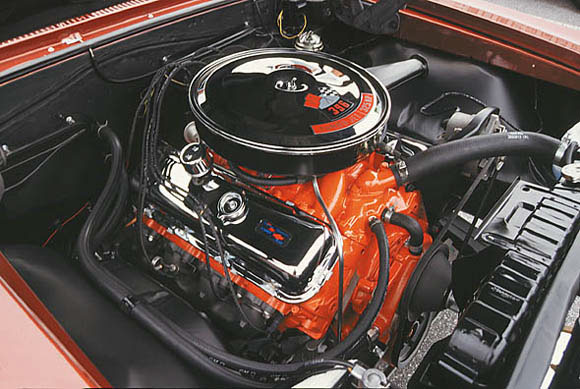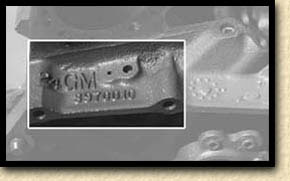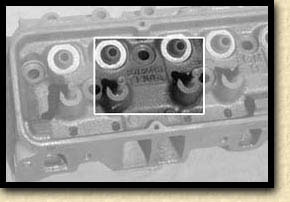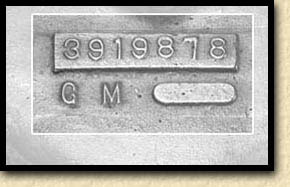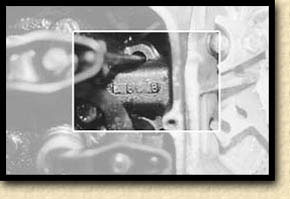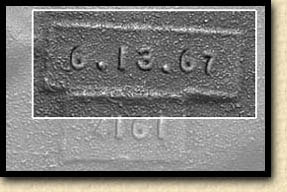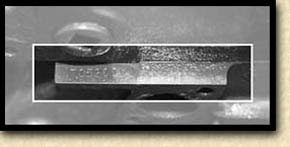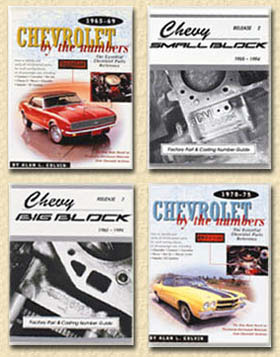For the sake of clarity, we’ve broken down the locations by engine type and code/number type. Engine Component Casting Numbers (the following information applies to V8 engines only):
|
Engine Component Date Codes (the following information applies to V8 engines only): 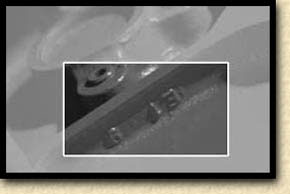 Block – On small-block V8s, the date code is located on the bellhousing/transmission mounting flange at the rear of the block on the passenger’s side. Big-block V8 date codes are usually found on the bellhousing/transmission flange at the rear of the block, but may also be located on the driver’s side of the block near the freeze plug. Still others (348/409 W-engines) may be found above the oil filter.
|
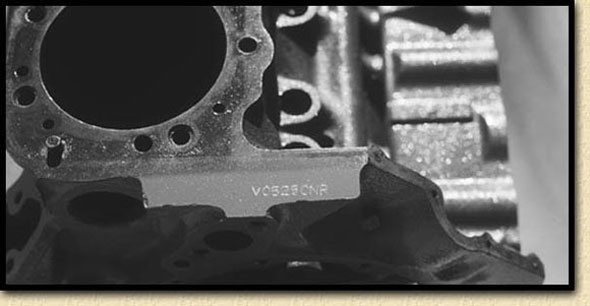 |
||
| The engine ID number is stamped on this machined pad at the front (passenger side) of the engine. This code was stamped by the engine assembly plant. This particular stamping decodes as follows: V = Flint Engine Plant; 05 = May; 25 = 25th day of the month; C = Car; NR = 350 cid/300 hp (w/TH-350 tranny) for use in a ’70 full-size passenger car. Note the lack of an engine V.I.N. number on this block – which means this particular engine was not installed in a chassis on the assembly line. | ||
Simply put, the proper numbers can mean the difference between a solid investment and losing your shirt! Actually, in the present-day restoration marketplace a premium is placed on muscle cars equipped with their original drivetrains. This doesn’t mean a 396 Nova missing the original engine is worthless – far from it – but all else being equal the car with the original engine will be worth more. If you plan on entering your car in concours classes at shows, the correct components are necessary if you hope to place well. Notice there’s a difference in the meaning of original and correct. Original means the car has the engine or drivetrain parts installed by the factory when the car was built. Correct means the various components (i.e. engine code, head castings, etc.) are the proper type for that particular model. It’s not usually possible to determine if the heads or intake installed on a particular engine are the originals simply because they weren’t serialized by Chevrolet. However, the date codes of these parts should precede the build date of the car by 1-3 months. This isn’t an exact science, however, and some exceptions do exist. Since the cylinder block is serialized it’s possible to determine whether the engine (or the block, anyway) was installed on the assembly line. The engine code should match the codes used in a particular application, and the sequence number should match the last six digits of the car’s V.I.N. Should is the key word in the above statement however, since there are rare cases where an engine can be considered original and not have a matching sequence number. There have been instances where engines were replaced under warranty, and although the technicians were instructed to stamp the sequence number into the replacement block, this did not always happen. |
Engines with complete assembly plant and ID codes, but no sequence numbers, are the result. If the engine in your car has a sequence number that doesn’t match the last six digits of the V.I.N., it is almost certainly not original. These cars were mass produced, however, and mistakes did happen on rare occasions.
Since the engine codes were stamped on a pad that is an extension of the deck surface, it is possible to remove the codes and identification numbers. This may happen during a normal rebuilding procedure (if a block is decked), or it can be purposely done by unscrupulous persons trying to pass off an unoriginal or incorrect block/engine to an unsuspecting buyer. That’s why it’s extremely important that all the pieces of the identification puzzle match. The engine codes and sequence numbers should match, the various casting numbers should be correct and the component date codes must precede the build date of the car (but not by more than a few months). If all these match, it’s a pretty safe bet the engine is original. If any one of these is incorrect, the authenticity of the car can be seriously challenged. |
|
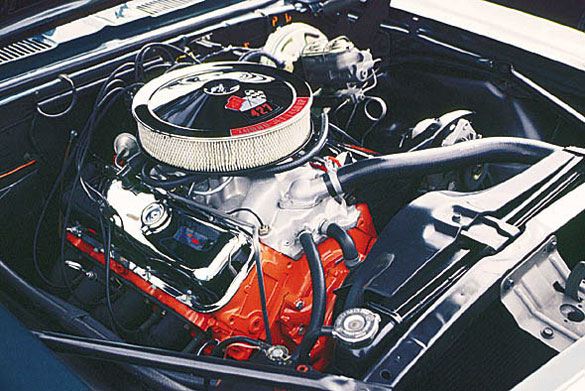 |
|||
Now that you know what the codes are, where they can be found, and why they’re important, you probably want to know how to read them. Fair enough. Casting Numbers – Casting numbers usually consist of seven digits. In some instances certain components are referred to by the last few digits of their casting number. Desirable cylinder heads and blocks are an example. You may have heard references to a set of “461″ small-block cylinder heads or an “010″ block. These are the last three digits of the complete Chevrolet casting number (3782461 for the heads and 3970010 for the block). In some instances Chevrolet would alter casting numbers by hand after the part was cast. This was done to make use of existing stock after a major design change has taken place. The normal practice was to grind off a certain amount of numbers and hand stamp the new digits. These instances are fairly well documented however. Due to the enormous amount of individual casting numbers produced throughout the muscle car era, we do not have room to publish them all here. There are many books listed in our Literature section that deal with the various casting numbers used, and we recommend that you consult those publications for complete listings. |
Date Codes – These codes are fairly simple to decipher. With a few exceptions, date codes are alphanumeric sequences that will tell you the month, day and year a particular component was cast. The codes are presented in the following format:
The first letter designates the month the piece was cast. Months run alphabetically, starting with A (January) and ending with L (December). The F in the above example represents June. The second and third digits are the day of the month the component was cast. These are listed 1 (sometimes 01) through 31. The 10 in the above example is the 10th day of the month. The final digit is the last number of the year the piece was cast. Obviously all numbers 0 through 9 are valid. In the case of the above example, the 5 represents 1965. How do we know it doesn’t mean 1955, or 1975? Because this code was taken from a #3782461 cylinder head casting which was produced between 1961 and 1966. (See what we mean by looking at all the pieces of the puzzle?) Occasionally, some date codes are listed entirely numerically. In this system a code may appear as 1 12 5 with the first 1 denoting January. This is very rare however, and chances are you won’t run across many in this format. |
||
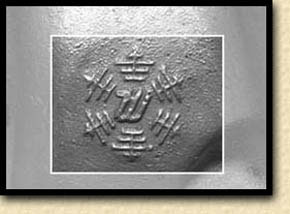 Another exception is found on some aluminum intake manifolds cast by Winters Industries (those with the famous Winters snowflake logo). These may appear as more complete dates, such as 3.13.67 (for March 13, 1967). Still other Winters-cast aluminum intakes will have the more standard alphanumeric code.
Engine Codes – By deciphering the codes stamped on the pad just below the passenger side cylinder head, you can determine when, where and for what application your engine (or block) was built and intended for. For the most part engine assembly plants used a standard format throughout the muscle car years which makes decoding much simpler. The only major change in this code appears on engines built for 1970-and-later models. In these codes an additional identifier was added, which in the case of Chevrolet was “C” for car and “T” for truck. The codes appear in the following format: T0205EG – engines for models through 1969 At this point things change a little depending upon what year model car the engine was intended for use in. On 1969-and-earlier engines, the sixth and seventh characters are the engine identification suffix. This suffix denotes the displacement, horsepower rating and intended model the engine was built for. In our example, the “EG” denotes a 375-horse 396 special-high-performance engine destined for a Chevelle. |
On 1970-and-later engines, the sixth character is the identifier (“C” = car; “T”=Truck) for the vehicle type, while the seventh and eighth characters are the engine identification code. In the case of our second example, “NR” represents a 300-horse 350 to be installed in a full-size passenger car (Impala/Caprice). Due to space constraints we can’t publish a complete list of engine ID codes, but they’re available in many of the books found in our Literature section. The other numbers stamped on the pad (at least for ’65-and-later models) is the engine V.I.N. This nine-character number is normally found beside or under the engine code. Stamped onto the pad by the final assembly plant (where the car is actually built), the number contains a divisional code (1 = Chevrolet), the last digit of the year model and a 1-character code (usually a letter code unless the car was assembled in Canada) for the vehicle assembly plant. Following these three characters are the last six digits of the car serial number (known as the sequence number). The last six digits will match the last six of the car’s V.I.N. number if the engine is original. Well, there you have it. You can now determine if that “numbers matching” car really has the right engine in it. Of course, to be truly numbers matching, the transmission and rear-axle assembly should be there as well, but most seem to check the engine only. If you have any questions regarding these topics, we invite you to email our tech support staff attechsupport@yearone.com.
|
||||
|
||||
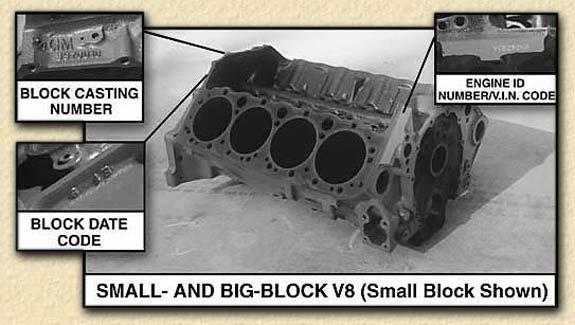 |
||||
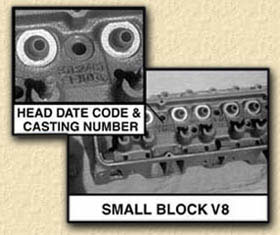 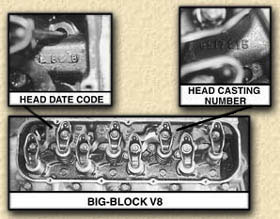 |
||||
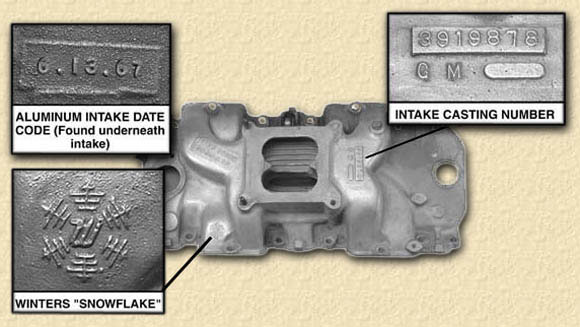 |
||||

